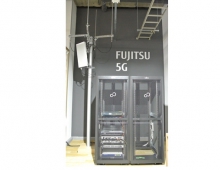
Fujitsu Laboratories Use Supercomputer for Real-Time Disaster-Recovery Scheduling
The Institute of Mathematics for Industry at Kyushu University (IMI) and Fujitsu Laboratories have developed a supercomputer-based technology that can quickly formulate optimum work schedules for disaster recovery, such as for repairing lifelines and road networks. Major disasters can bring secondary disasters and a variety of other outcomes, such as impassable roads, and conditions can change dramatically in a short period of time. This creates an urgent need to quickly formulate schedules for recovery work and to take swift action. However, since conditions can change even as plans are being formulated, it is difficult to perform the calculations based on massive volumes of data in real time needed to propose an ideal plan that reflects those changing conditions.
Fujitsu Laboratories and IMI have developed a numerical-optimization technology that runs on a supercomputer to efficiently formulate large-scale recovery plans while taking into account complex conditions on the ground, creating real-time scheduling for recovery work.
This makes it possible to put together the newest recovery plans that respond to evolving conditions, such as changes in the extent of the affected area or the pace of recovery work, contributing to better optimized disaster responses.
When used with 506 recovery sites and 64 work teams, this technology was able to formulate an appropriate recovery-work schedule that satisfied all constraining conditions in roughly three minutes. This would be able to quickly present the most recent plan that responds to changing conditions, including the extent of an area affected by a disaster and the pace of recovery work.
Also, the newly developed algorithm and computing environment have potential applications for delivery scheduling in distribution and logistics, as well as to related work schedules and personnel allocations. It may be possible to formulate detailed delivery plans that respond to complex conditions during the delivery process.
Fujitsu Laboratories and IMI are working on a data-utilization platform that can collect data on disaster conditions and work status in real time, which will be key to applying this technology in the real world, and aim to offer a practical implementation to local governments and other emergency-response organizations starting in fiscal 2017.





















